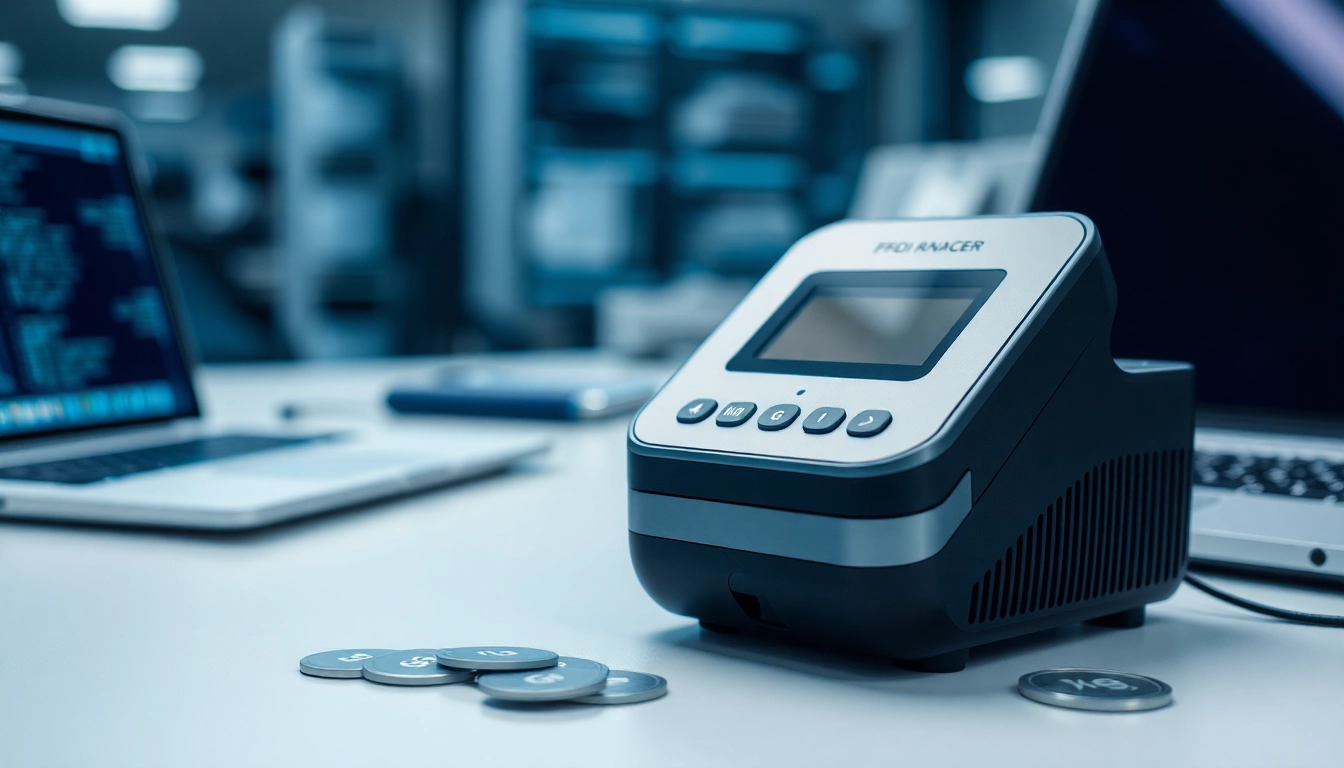Understanding RFID Technology
Radio Frequency Identification (RFID) is transforming industries by enabling businesses to efficiently track assets, manage inventory, and simplify many operational processes. Central to this technology are RFID readers, which serve as the interface between the physical world of RFID tags and the digital database systems used by organizations. In this article, we will explore the fundamental aspects of RFID readers, their operational mechanics, the different types available, and their applications in various sectors.
What is an RFID Reader?
An RFID reader is a device that communicates with RFID tags through radio waves. These readers can read, and sometimes write, data to RFID tags that are embedded in objects for identification and tracking purposes. The fundamental function of an RFID reader is to emit signals at a specific frequency, detect any RFID tags within its range, and retrieve information stored on those tags. Essentially, when an RFID tag enters the reader’s range, it responds to the signal sent by the reader, allowing for the exchange of data.
How RFID Works in Data Transmission
RFID systems utilize radio waves to transmit information. An RFID reader sends out electromagnetic waves, which activate the tags within its proximity. RFID tags consist of a microchip for storing data and an antenna for communication. When the reader sends a signal, the tag’s antenna captures and reflects the energy back to the reader, thereby transmitting the information contained within the chip. This interaction is quick and does not require line of sight, making RFID technology highly versatile and efficient for various applications.
Types of RFID Readers Available
RFID readers come in various types, designed to meet different needs in diverse applications. The primary categories are:
- Handheld RFID Readers: These portable devices allow users to scan RFID tags in real-time, ideal for field applications and inventory checks.
- Fixed RFID Readers: Installed at specific locations, these readers are used for tracking movements through doorways or conveyor belts, often found in warehousing and retail settings.
- Integrated RFID Readers: These are built into other devices such as printers or mobile phones, providing seamless data gathering capabilities without requiring additional equipment.
- Mobile RFID Readers: These compact options are designed for use with mobile devices, facilitating on-the-go scanning capabilities.
Choosing the Right RFID Reader
Choosing the right RFID reader is vital for ensuring that the specific requirements of your organization are met effectively. This decision should be based on several critical factors:
Factors to Consider Before Buying
When selecting an RFID reader, consider the following factors:
- Type of RFID Technology: Ensure compatibility between the reader and the tags being used, whether they are Low Frequency (LF), High Frequency (HF), or Ultra High Frequency (UHF).
- Read Range: Different applications may require varying read ranges. For example, an inventory management system may benefit from longer-range readers.
- Environment: The setting where the reader will be used is crucial. Industrial environments may require ruggedized devices, while office settings might need more portable solutions.
- Data Processing Capabilities: Consider whether the reader integrates with existing database systems and if it can handle the volume of data required for your operations.
- Cost: Balance the budget constraints with the expected performance and capabilities to choose a solution that fits your organization’s financial resources.
Common Applications of RFID Technology
RFID technology has a broad range of applications across different industries, including:
- Inventory Management: RFID readers streamline inventory checks and tracking, minimizing human error and improving accuracy.
- Asset Tracking: Organizations use RFID to keep track of valuable equipment, ensuring quick location when needed.
- Access Control: Many facilities employ RFID readers to manage access to secure areas, enhancing security measures.
- Retail: In retail environments, RFID readers improve checkout efficiency and stock management by ensuring accurate item counts.
Vendor Recommendations for RFID Readers
In the market, several leading vendors offer high-quality RFID reader solutions capable of meeting various business needs. Some reputable brands include:
- Zebra Technologies: Known for their robust solutions suitable for industrial applications.
- Impinj: Offers a wide range of RFID readers with excellent read rates and flexibility.
- SATO: Specializes in automatic identification technology, including RFID solutions geared for various sectors.
- ThingMagic: Provides flexible RFID reader solutions conducive to both fixed and mobile setups.
Integrating RFID Readers into Your Business
Successful integration of RFID readers into existing business processes is essential for maximizing efficiency and benefits. The following sections outline critical steps to consider during this integration process.
Step-by-Step Installation Guide
To effectively install RFID readers, follow these steps:
- Planning: Assess your inventory management or asset tracking needs to determine the appropriate type and number of readers required.
- Placement: Identify strategic placement locations where readers will be installed to capture optimal tag signals.
- Installation: Physically install the readers, ensuring they have the necessary power supply and network connections.
- Configuration: Configure the reader settings according to the specific requirements, including adjusting read ranges and communication protocols.
- Testing: Conduct thorough tests with predetermined tags to ensure the readers function correctly and capture data effectively.
Best Practices for Effective Use
To maximize the efficiency of your RFID readers and the overall system, consider these best practices:
- Employee Training: Ensure all employees are adequately trained in using RFID systems and understanding the technology.
- Regular Maintenance: Schedule periodic maintenance to ensure readers remain operational, which includes cleaning and software updates.
- Calibration: Regularly calibrate readers to guarantee accuracy and reliability in data capture.
- Integration with Software: Utilize RFID software solutions that seamlessly integrate with existing databases for efficient data management.
Measuring Effectiveness with KPI Analytics
To determine the return on investment (ROI) from RFID implementations, it is critical to measure performance through key performance indicators (KPIs) such as:
- Inventory Accuracy: Track improvements in inventory levels and discrepancies.
- Operational Efficiency: Measure the time saved on inventory checks and the speed of item retrievals.
- Cost Savings: Evaluate the reduction in labor costs and losses due to stock shortages.
Troubleshooting RFID Reader Issues
Despite their benefits, RFID systems can encounter occasional issues. Troubleshooting these problems effectively is key to maintaining operational integrity.
Common Problems and Solutions
Some typical challenges faced include:
- Range Issues: If readers are not picking up tags, verify the placement and power supply; interference from metal objects or electronic devices may be obstructing signals.
- Inconsistent Read Rates: Ensure that tags are positioned correctly and that firmware on the reader is up-to-date to provide optimal performance.
- Data Synchronization Errors: Regularly check the connections between readers and your database to avoid losses or inconsistencies in data integration.
Software and Firmware Updates
Keep your RFID readers updated with the latest software and firmware to enhance performance and security. Regular updates can resolve bugs, improve functionality, and ensure compatibility with new hardware or systems.
When to Seek Professional Help
If issues persist despite following troubleshooting guidelines, consider reaching out to a professional. Specific technical issues, such as network-related problems or deep hardware malfunctions, may require expert assistance.
The Future of RFID Technology
The future of RFID technology looks promising, driven by advancements in innovation and increasing applications across various industries.
Innovations in RFID Reader Designs
In the quest for greater efficiency, manufacturers are developing advanced RFID readers that are faster, more compact, and integrated with IoT devices. Innovations like multi-frequency support and improved connectivity options will further enhance data transmission and real-time analytics capabilities.
Advanced Applications in Various Industries
As industries continue to embrace digitization, the applications for RFID technology expand into areas such as:
- Healthcare: RFID systems can track medical equipment, manage prescriptions, and ensure patient safety by monitoring medication administration.
- Automotive: The automotive sector uses RFID for vehicle tracking, component identification, and to streamline assembly lines.
- Supply Chain Management: The technology enables real-time inventory tracking, reducing shrinkage, and enhancing visibility along the entire supply chain.
Preparing for the Next Generation of RFID
As RFID technology evolves, businesses must prepare by investing in flexible systems that can adapt to future developments. By doing so, organizations can maintain their competitive advantage and fully leverage the efficiency and accuracy offered by RFID solutions.






Leave a Reply